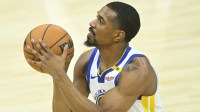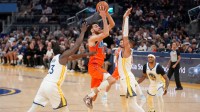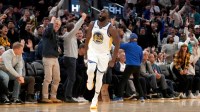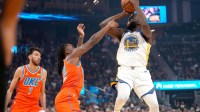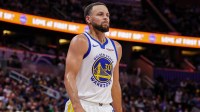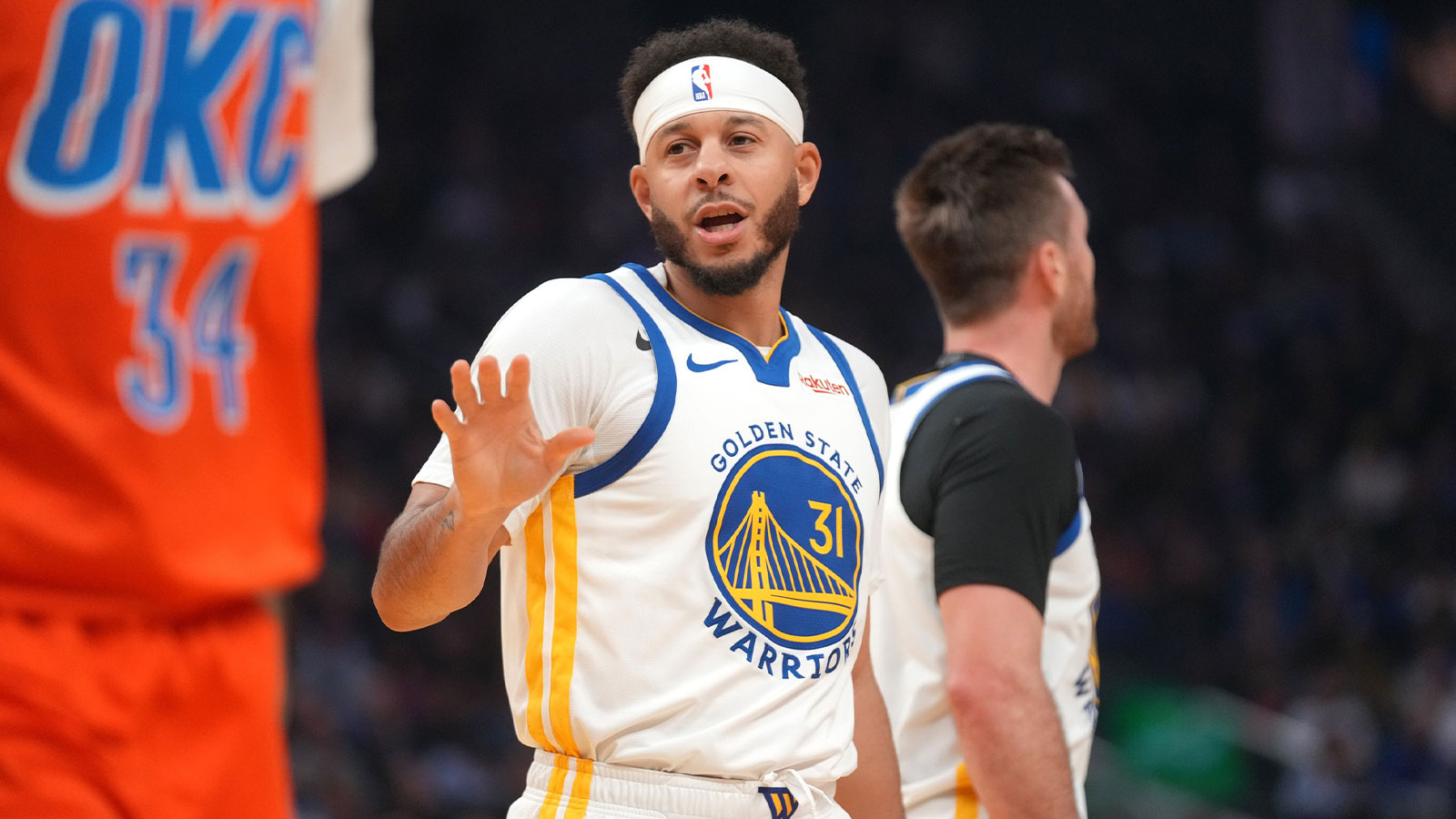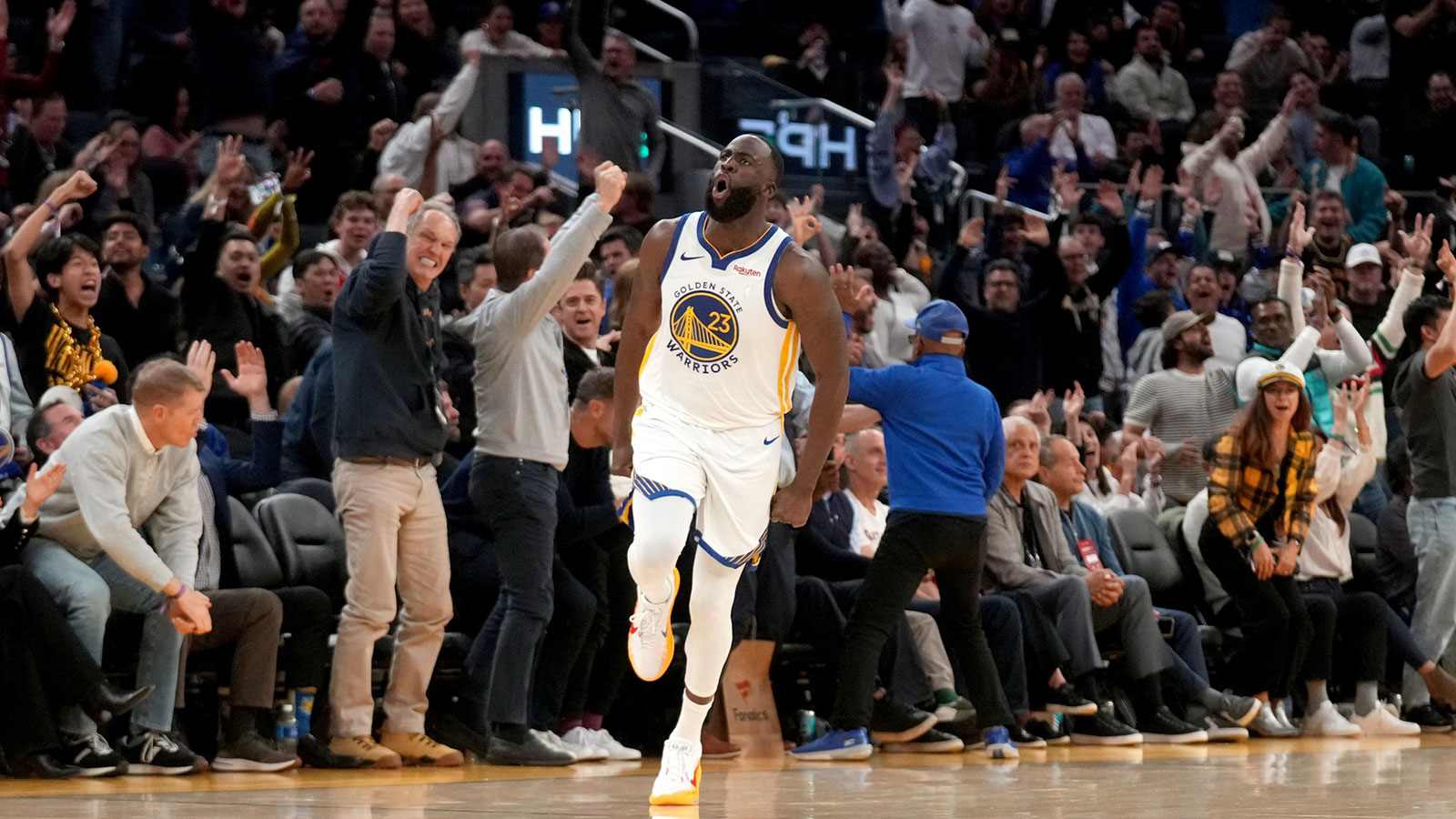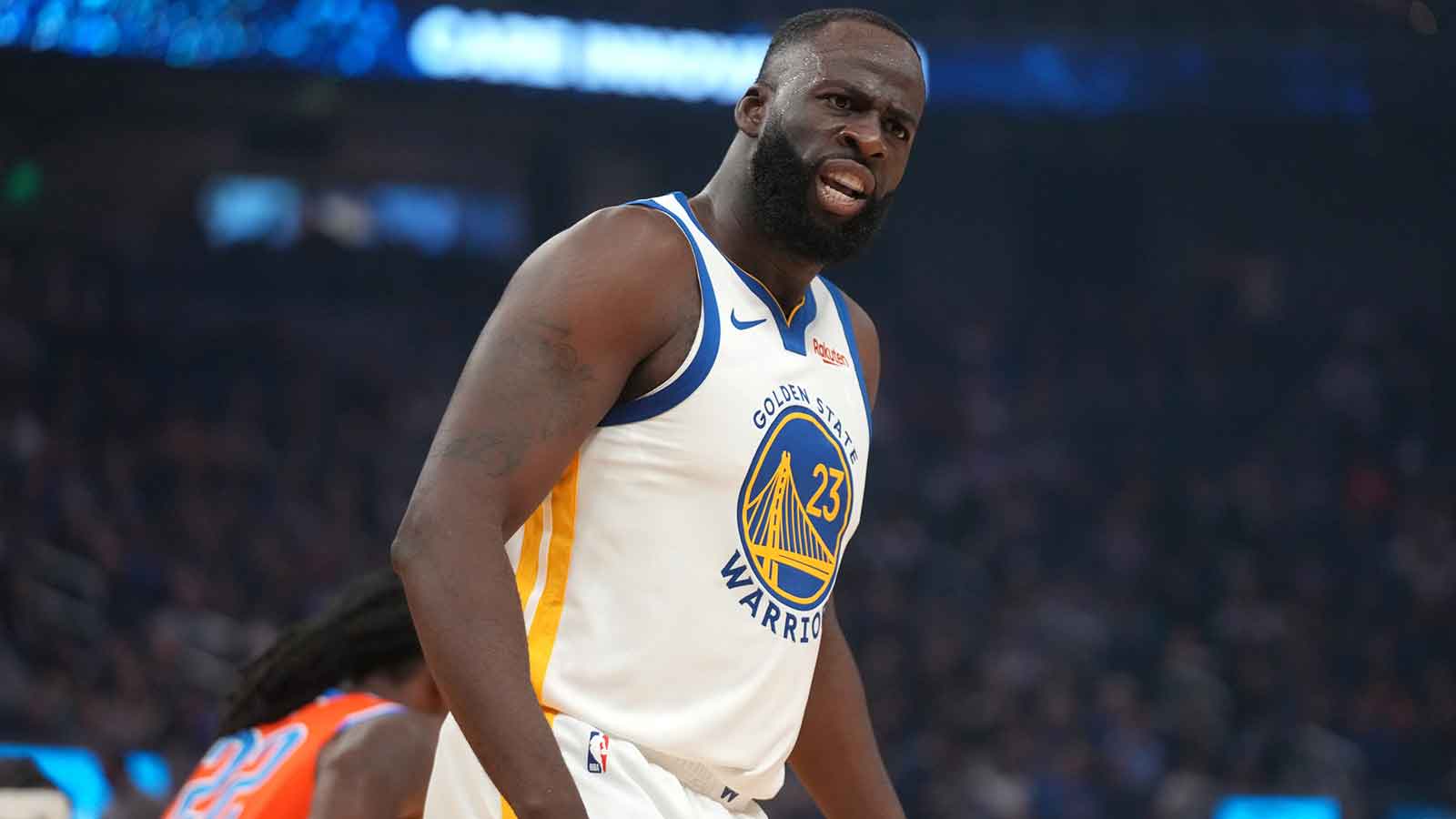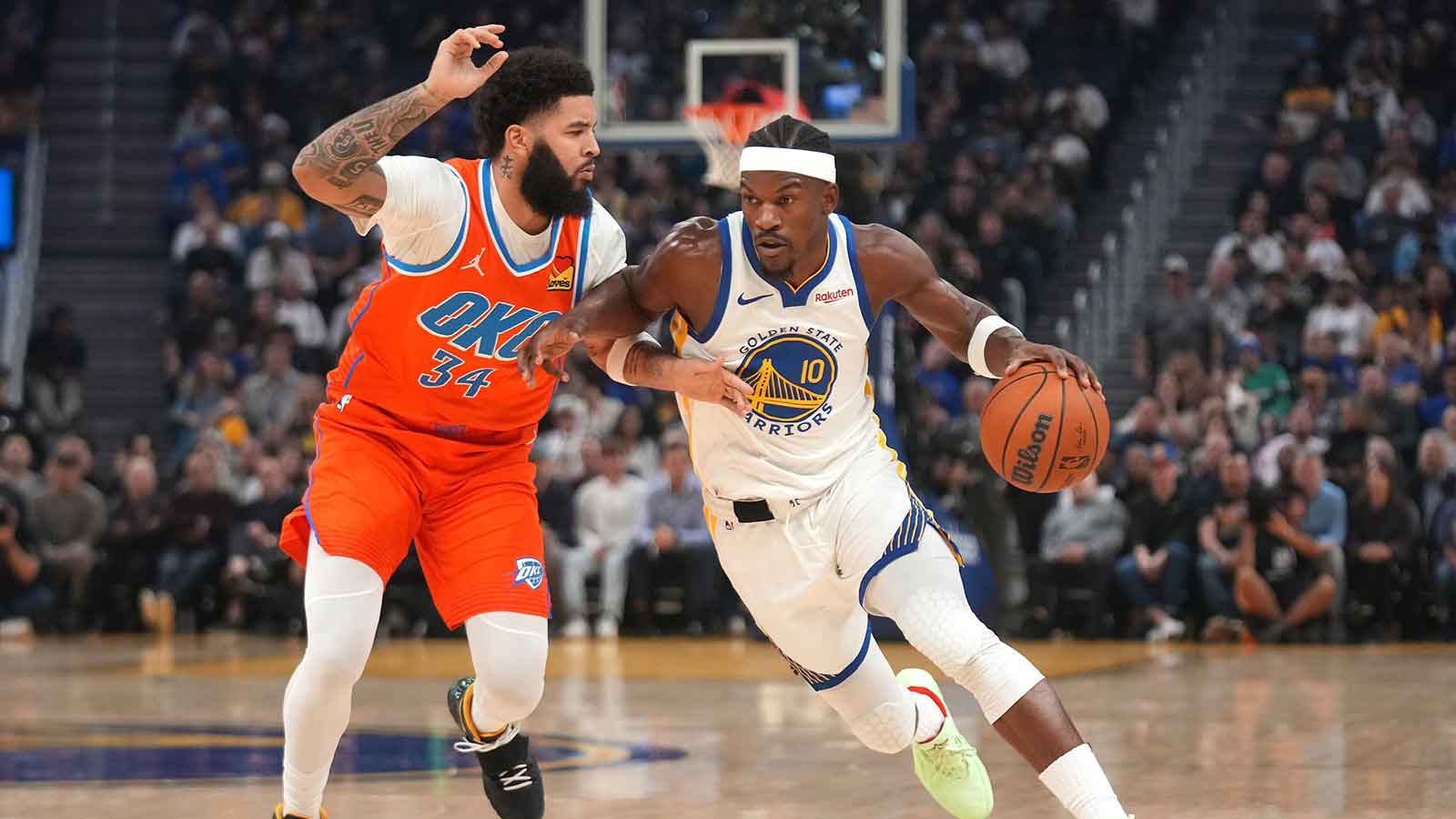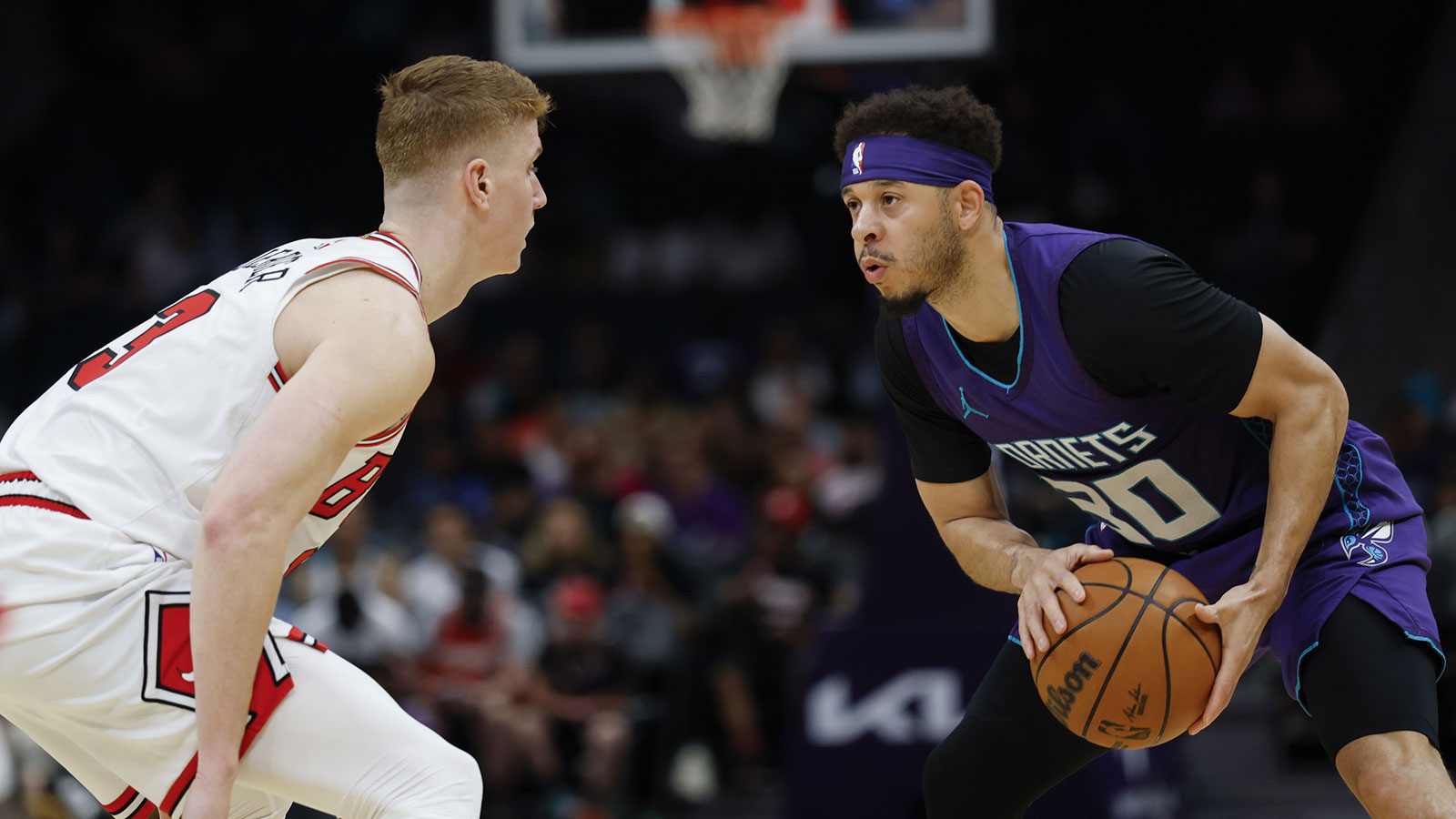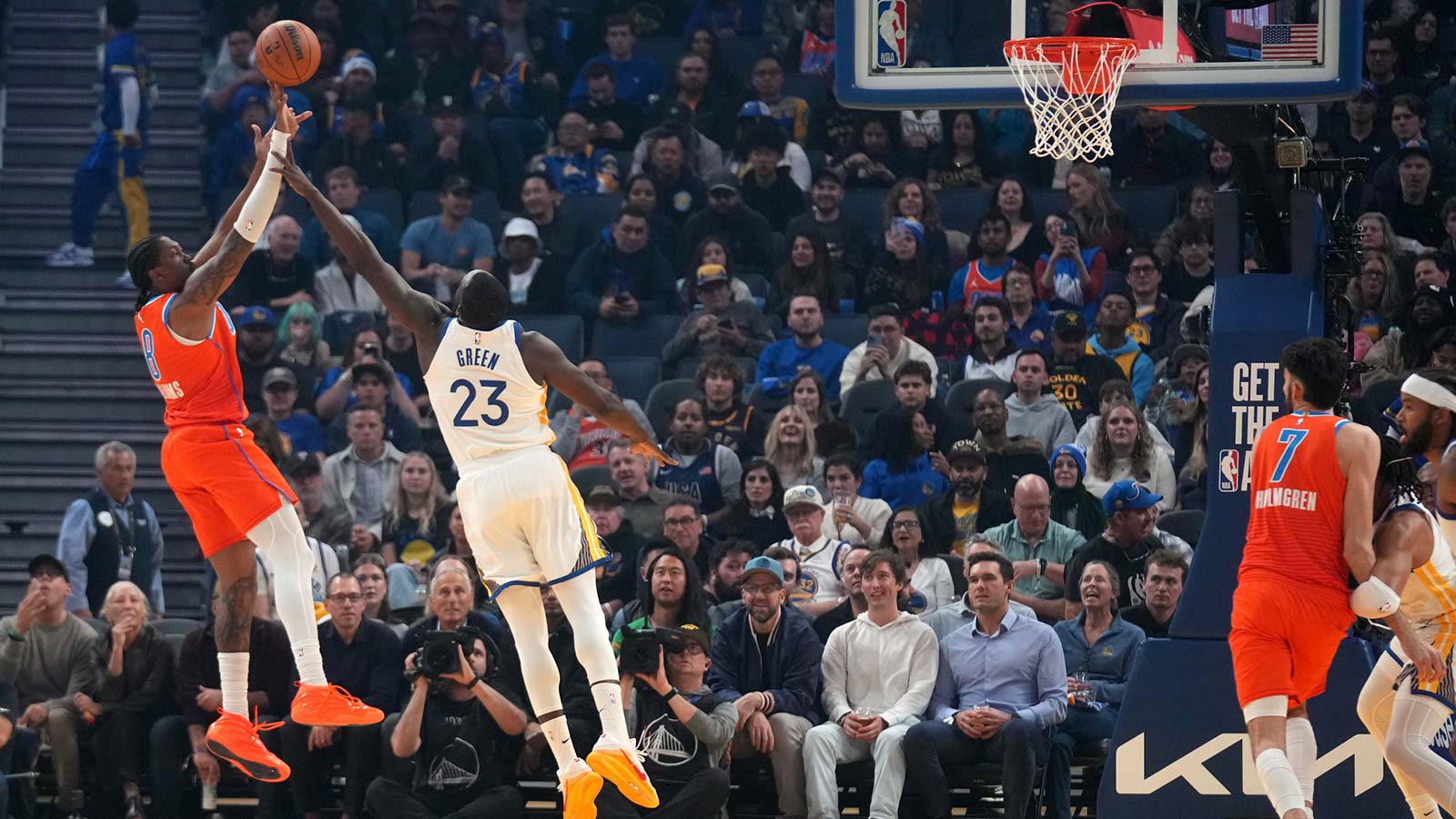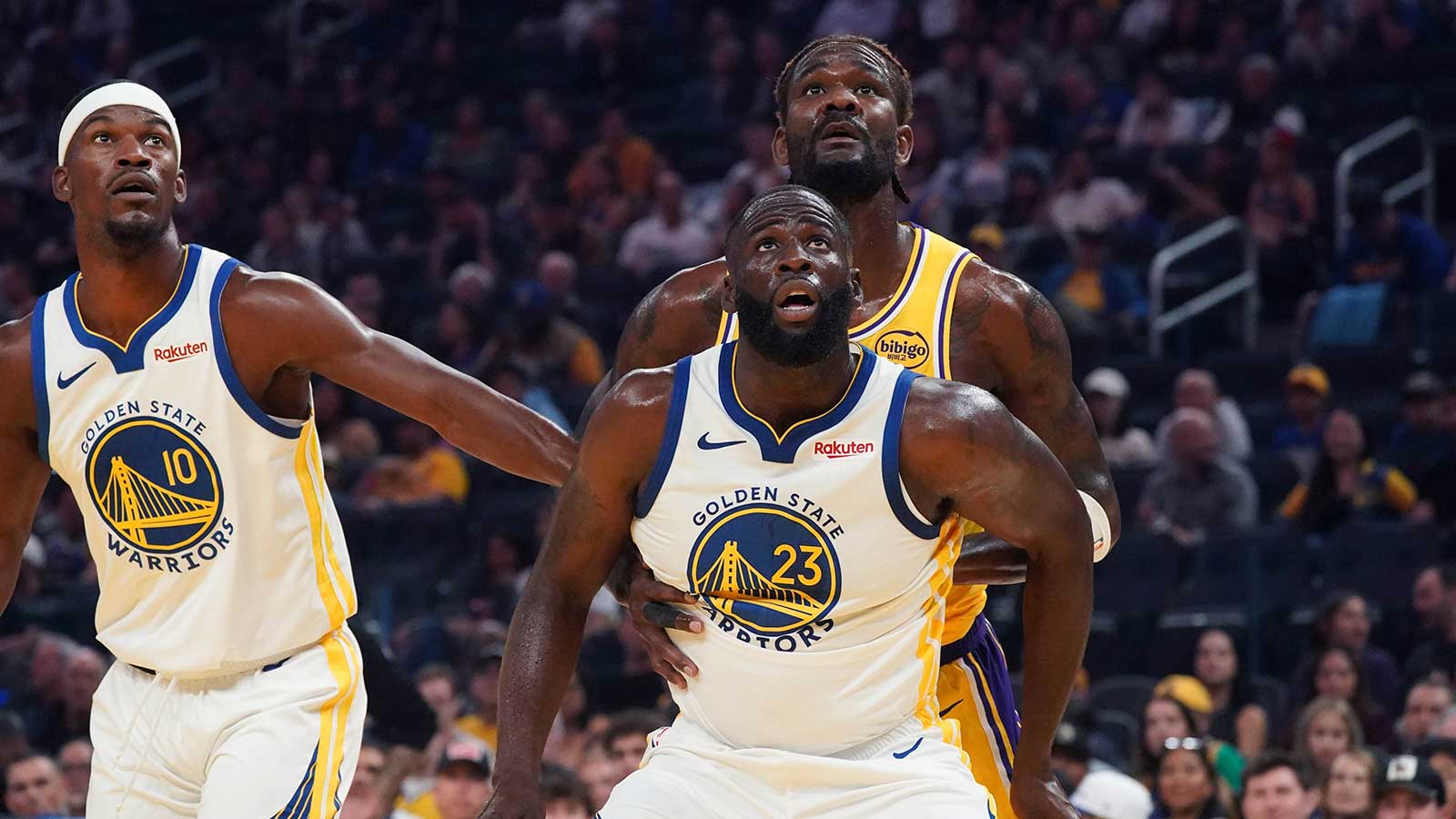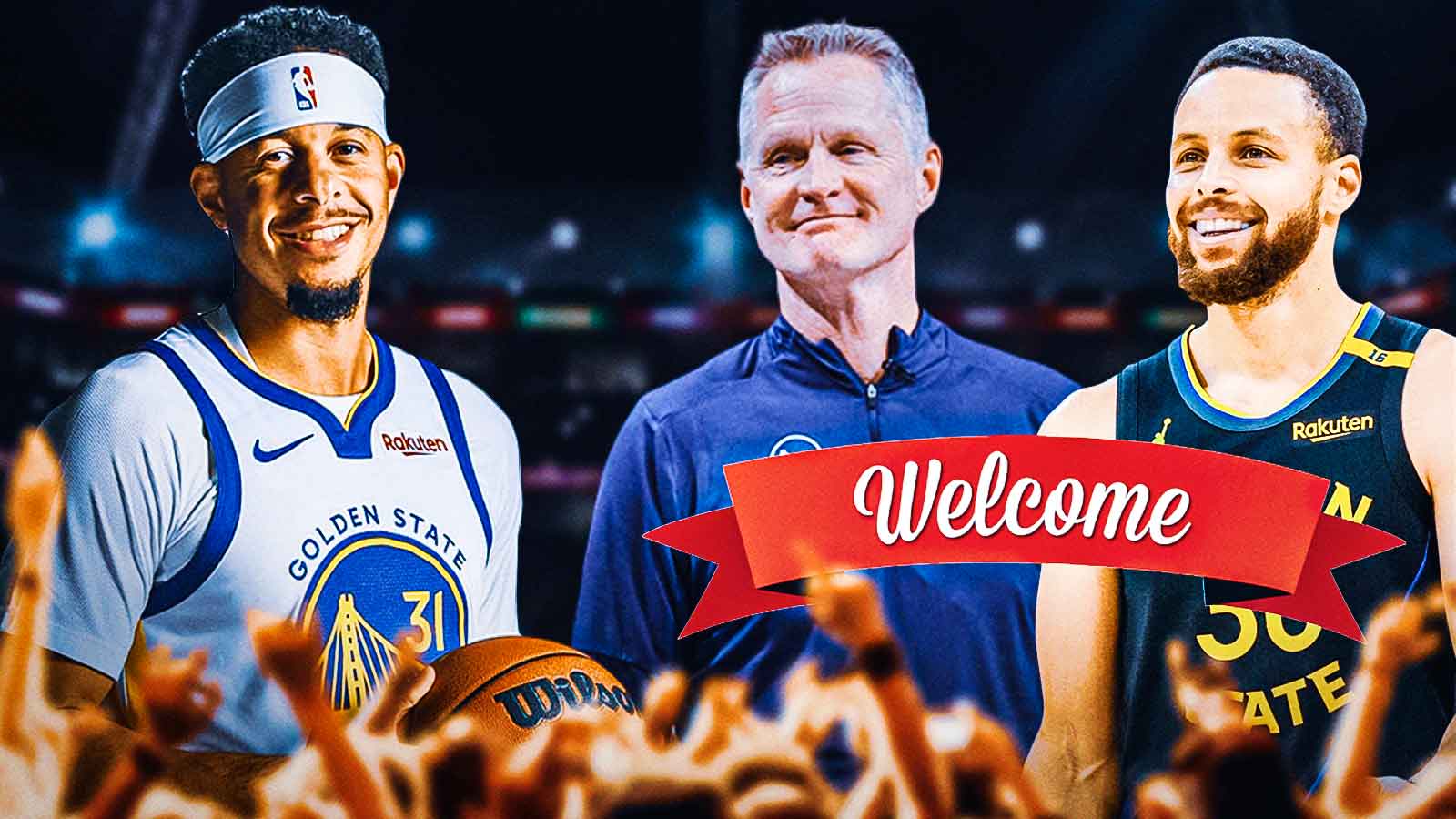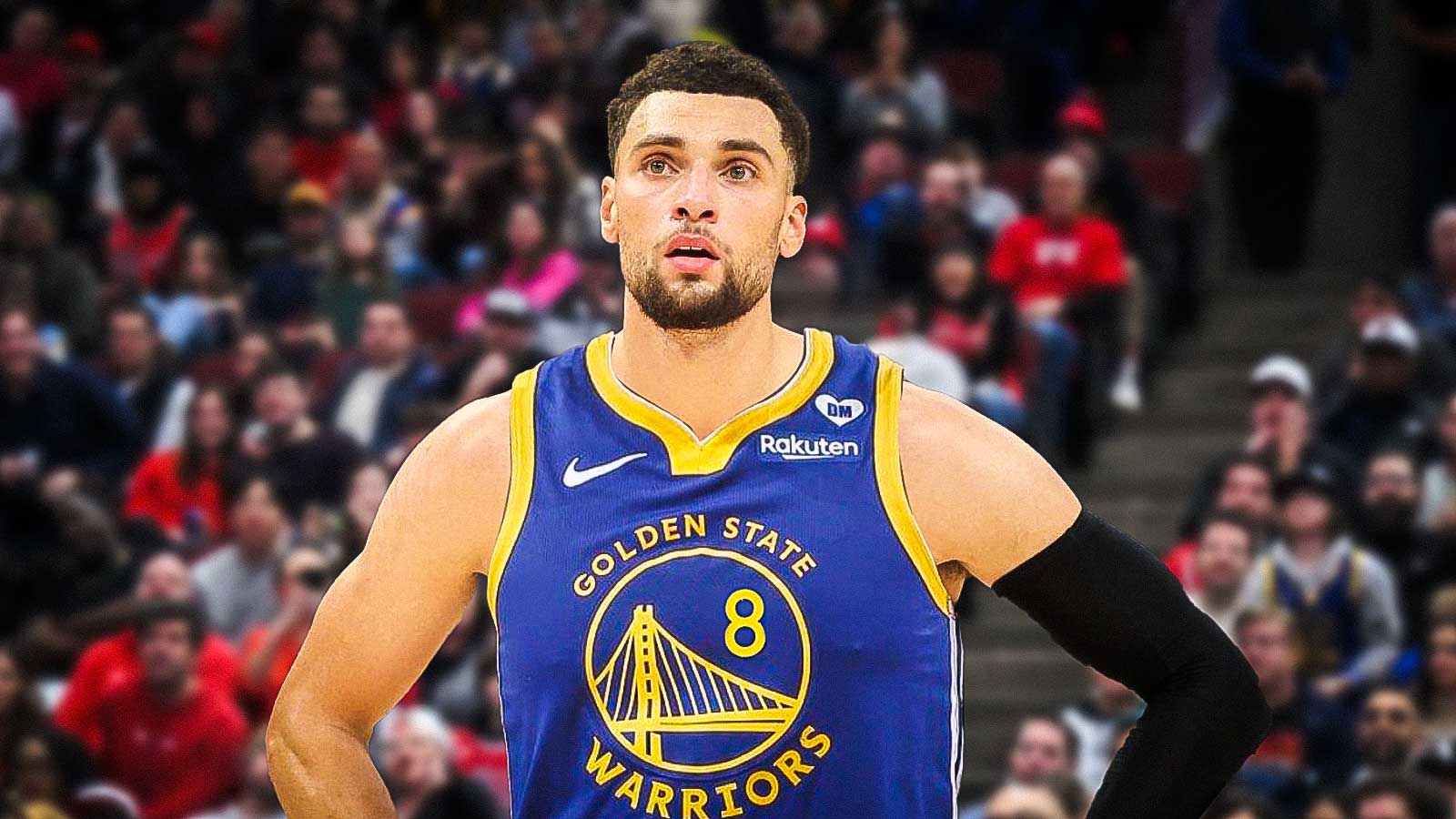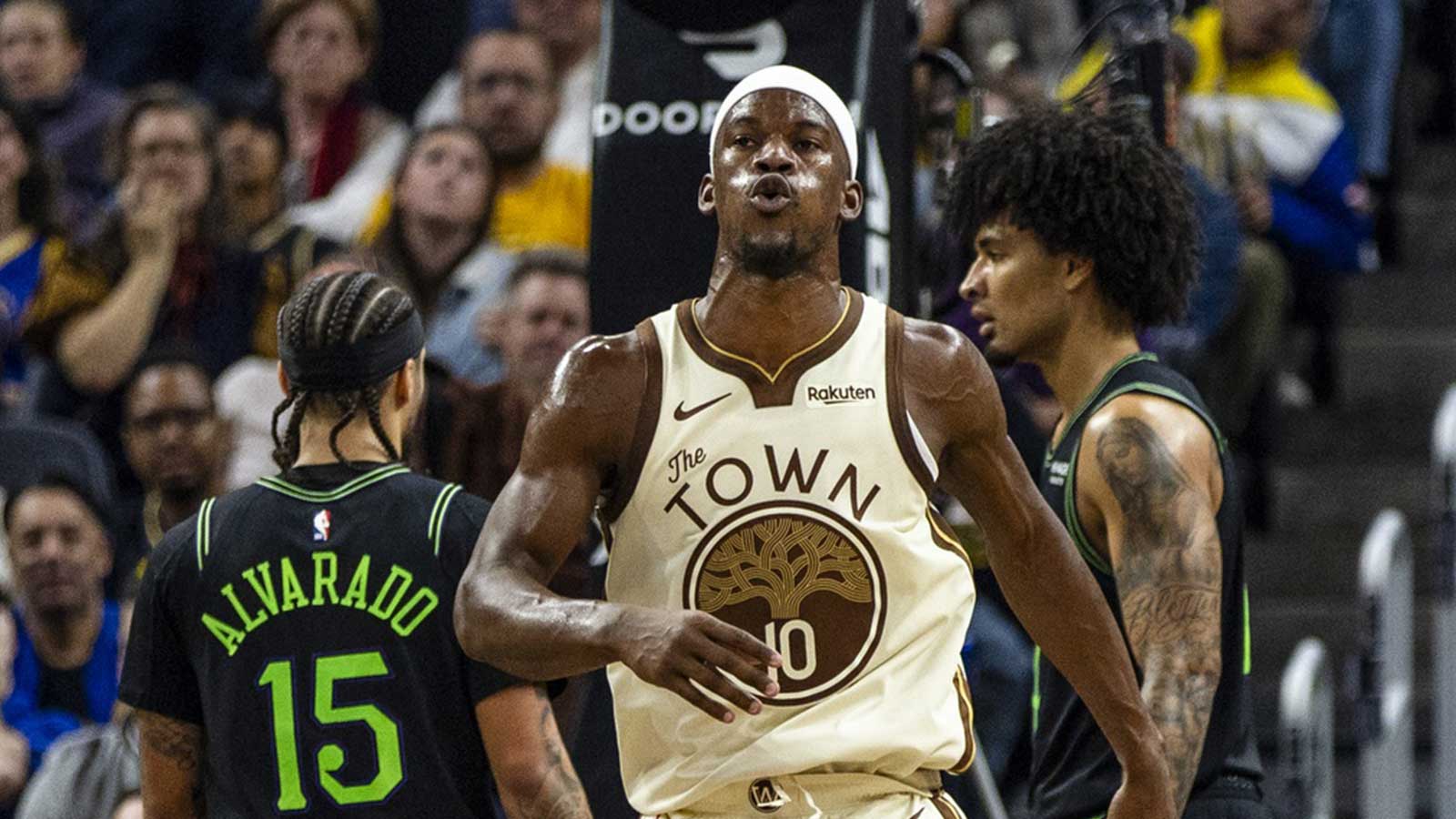When the 2024-25 season came to a screeching halt for the Golden State Warriors, with Stephen Curry injuring his hamstring and the team losing in the Western Conference semifinals to the Minnesota Timberwolves, all eyes turned to what offseason negotiations with Jonathan Kuminga would look like.
The future of the Warriors hung in the balance of the decision made with Kuminga this offseason, especially given the state of the franchise.
Stephen Curry is 37 years old. Jimmy Butler is 36. Draymond Green is 35. None of these stars are getting any younger, and they are all in the later stages of their respective careers, simply wanting at least one more chance to contend for a title. That is why a talent like Kuminga was viewed as an essential secondary piece for the Warriors.
Aside from his athleticism and growth as a downhill, attacking forward since entering the league at 19 years old in 2021, the now 22-year-old was viewed by owner Joe Lacob and other high-ranking Warriors officials as an essential, long-term building block for this franchise — a player who could lead that next generation once the team's stars call it a career.
Lacob has always held a strong relationship with his players, and Kuminga has long been one of his prized possessions since the Warriors selected him seventh overall in the 2021 NBA Draft. His affinity for Kuminga led to major questions entering the offseason since he was entering restricted free agency after failing to negotiate a long-term contract with Golden State before the 2024-25 season.
Would Kuminga be back with the Warriors, or was this the end of a messy, inconsistent four years where the forward felt like he was consistently underutilized by head coach Steve Kerr? The bottom line is that Lacob and the Warriors' front office were not prepared to let Kuminga walk for nothing as a restricted free agent.
That is why, after three long months of stressful negotiations with neither side blinking nor willing to budge, Lacob ultimately got his wish.
A sense of relief has surrounded the Golden State Warriors since the start of training camp. This is not only because key free-agent additions like Al Horford and De'Anthony Melton are present after signing their respective contracts with the team, but mainly because Kuminga returned to the team's facility for his first practice on Thursday.
Instead of accepting his qualifying offer, an option he and his agent, Aaron Turner of Verus Basketball, utilized as what became an empty threat throughout contract negotiations with Golden State this offseason, Kuminga agreed to a new two-year, $46.8 million contract that contains a team option and a 15 percent trade kicker.
As a result, this contract can grow to $48.5 million in total over two years if Kuminga is traded.
This is a very unique contract for Kuminga and the Warriors for a multitude of reasons.
Not only does this deal allow Kuminga to return without a dark cloud hanging over the organization by way of the qualifying offer, which would've been the worst scenario for all parties, but it also keeps plenty of options on the table for Golden State.
Overall, this offseason's major stalemate coming to an end was a sigh of relief for general manager Mike Dunleavy Jr., who can now turn his attention to making sure his team is in the best position possible to compete for a spot in the 2026 NBA Finals eight months from now.
“We've got everything signed, sealed, delivered roster-wise. I'm pretty excited about this group and this season,” Dunleavy told reporters on Wednesday. “I feel like we made some really good additions and have some really good, key returning players.
“My headline is this team, heading into the season, has got a great shot.”
Of course, part of the reason Dunleavy is so confident is because he was able to secure a commitment from Kuminga on a new contract, one that allows him to be a focal point for the Warriors behind their stars while also acting as a $22.5 million trade exception Golden State can use at their disposal.
The idea behind this “1+1” contract Kuminga signed with the Dubs is that, whether he remains in Golden State or is traded to another team, he could enter free agency again in 2026 and decide for himself what he wants to do. It became clear that the Warriors needed more time to decide on Kuminga's future, and they now have over four months to do so before the trade deadline.
Still, these negotiations with Kuminga and his camp were anything but smooth, leading to an offseason where the Warriors were forced to be on the edge of their seats.
Warriors never blinked in contract negotiations
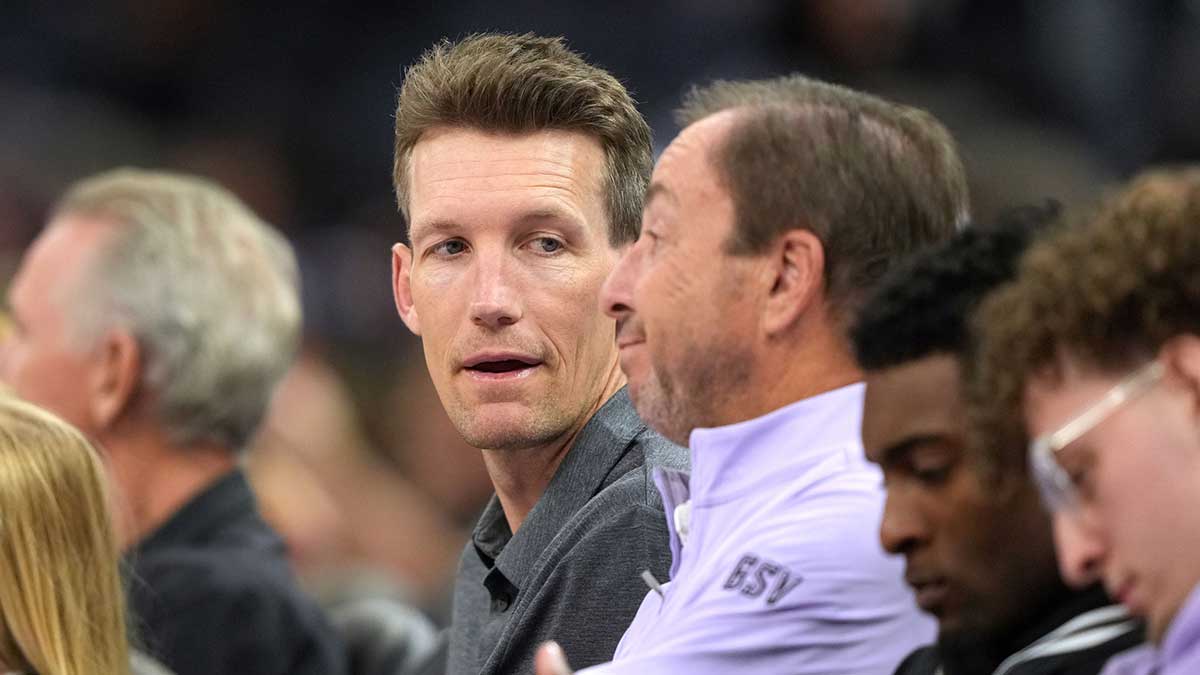
As free agency began on June 30, Kuminga's chances of returning to the Warriors seemed bleak.
Dunleavy and this organization were leaving all options open as far as exploring the trade market this summer, and Kuminga being a restricted free agent allowed Golden State to operate worry-free when it came to the possibility of another team pursuing the young forward.
Limited teams had cap space to offer Kuminga a contract north of $20 million per season, and only a few teams actually held a level of interest in pursuing the scenario of adding him.
At no point did any team explore the possibility of signing Kuminga to an offer sheet, which the Warriors would have matched, sources said. Kuminga did not want to lock himself into an unavoidable contract that gave him no possibilities of exploring his value on the open market by signing an offer sheet and having the Warriors instantly match.
Not to mention, with a weak free-agent class and the vast majority of teams being wary of spending money amid tax apron fears, the market for all restricted free agents was dry.
Cam Thomas and Quentin Grimes ultimately accepted their qualifying offers, and it was not until the middle of September that Giddey and the Chicago Bulls came to an agreement on a four-year, $100 million contract with no options or opt-outs.
Kuminga was the last big domino to fall this offseason, and the conclusion to this staredown between the two sides would make or break the Warriors' immediate future.
Accepting his qualifying offer was a threat Kuminga's side attempted to use as leverage multiple times during negotiations, yet the Warriors never once believed this was a realistic path for the 22-year-old. This was a bluff Dunleavy and the Dubs' front office were willing to call out, regardless of how long negotiations stalled.
Although the Warriors explored Kuminga's sign-and-trade market this season, which was virtually impossible without having to sacrifice additional assets because of cap restraints, many within Golden State's organization, including Lacob, wanted Kuminga back on a short-term contract, multiple league sources said.
The majority of the organization were not ready to part ways with Kuminga just yet after he proved his potential in their recent playoff series against the Minnesota Timberwolves, especially since it became clear the franchise would need his athleticism and slashing abilities next to their stars to become a championship threat once more.
After all, the Warriors' most recent title run in 2022 featured similar characteristics from Andrew Wiggins, who was an essential 3-and-D slasher on the wing who stepped up defensively and as a rebounder every single playoff game.
That is the role Golden State has groomed Kuminga for over the last handful of years, which has caused a level of frustration for the young forward since he believed he was being held back from reaching his full potential. His inconsistent role and the Warriors' unwillingness to relinquish an ounce of leverage led to negotiations going nowhere throughout the summer.
Even so, a two-year, $45 million contract containing a team option and Kuminga waiving the no-trade clause he would receive was on the table since before NBA Summer League. Around this time, Kuminga was meeting with other teams, specifically the Sacramento Kings, and held out hope that a sign-and-trade would be reached, sources said.
However, the Dubs and Dunleavy still envisioned a path where the two sides would reach an agreement later on. Weeks went by after Summer League with no deal being reached, and it wasn't until the middle of August that the two sides met face-to-face. It was then that Dunleavy, Lacob, and the Warriors' brain trust hoped to finally put an end to this offseason holdout.
How Warriors, Jonathan Kuminga ended contract disputes
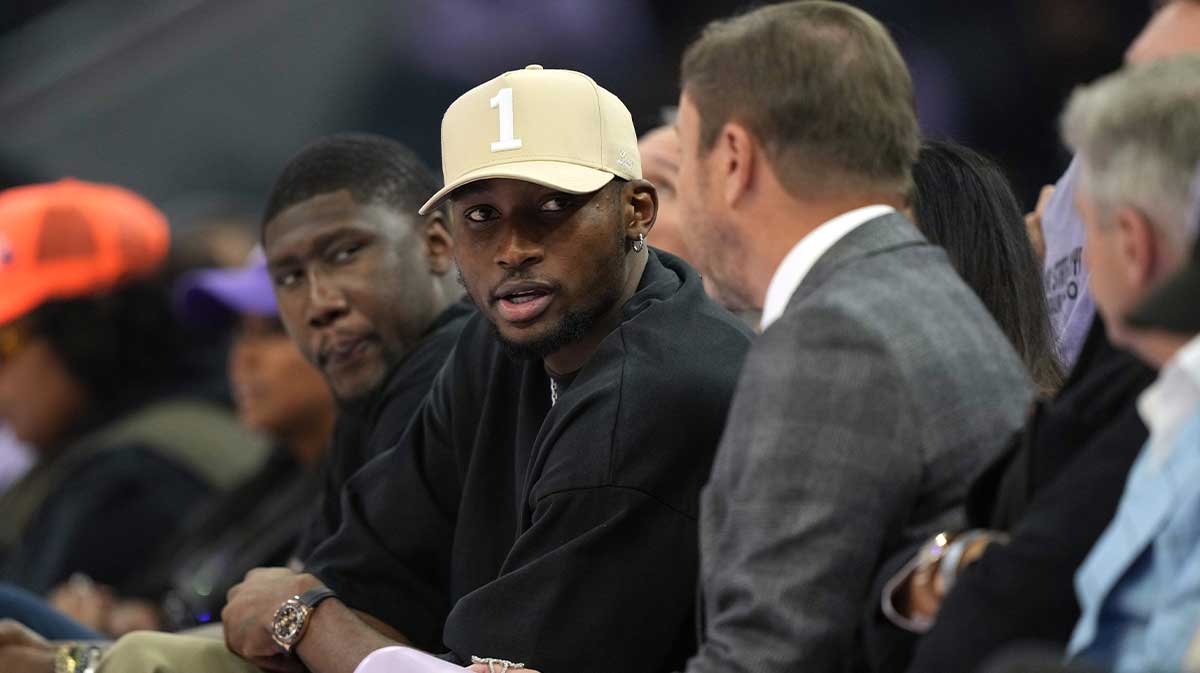
In Miami, Kuminga, his agent, and the team met face-to-face to try and hash out the specifics of a new deal. Right away, Kuminga's side made it clear the two-year, $45 million contract wasn't an option because of all the control that the organization would hold over him.
Turner made it clear to Dunleavy and Lacob that they would sign that contract right then and there if the deal had been flipped in favor of Kuminga with a player option, but the Warriors never once considered doing so, sources said.
Golden State was already offering Kuminga more money for the 2025-26 season than any other team would've given him via a sign-and-trade, and the opportunity to continue growing for the team he has worked so hard to be with over his first four years in the league was a selling point for the organization.
It was during this meeting that Lacob and his crew asked Kuminga if he wanted to be back with the Warriors, according to ESPN's Anthony Slater. As many know from this offseason saga, it was in that moment that Kuminga responded, “Do you even want me here?”
From Kuminga's perspective, he wanted respect and didn't want to feel like he was being used, which is what this two-year proposal felt like to him. No deal was reached in this face-to-face meeting, and it seemed like the two sides were back to where they started this offseason, with Kuminga signaling that he didn't want to be back with Golden State.
No matter who you asked around the league when free agency began, the word surrounding Kuminga remained constant. Rival teams knew he wanted a fresh start somewhere he could reach his full potential, and Kuminga continued to signal that he was willing to bet on himself with the qualifying offer, his only leverage in discussions.
Was this all just a ploy by Kuminga's side to try and exercise any ounce of leverage they could to get the best deal from Golden State? Maybe it was later in the offseason as negotiations stalled, but early on, it appeared as if Kuminga already had a foot out the door.
Once Labor Day passed in early September and Giddey ultimately agreed to his deal with the Bulls, a growing sense of urgency surrounded the Warriors.
Free agents like Al Horford, De'Anthony Melton, and Gary Payton II were all waiting to sign their deals with the team that had been verbally confirmed and agreed upon in the middle of the summer, sources said. The Warriors were also beginning to feel pressure from Steph Curry, Draymond Green, and Jimmy Butler, all of whom wanted clarity on what was happening.
Through August and September, the three stars were in constant communication with Dunleavy, Lacob, and other high-ranking front-office officials. All three advocated for Kuminga returning, and Green had been a key mentor and supporter for Kuminga behind the scenes, sources said.
With his October 1 qualifying offer deadline approaching, the Warriors had three offers on the table:
- A two-year, $45 million contract with a team option.
- A three-year, about $54 million contract with no options.
- A three-year, $75 million contract with a team option.
Kuminga and his agent wanted a player option. They believe it was only fair for him to receive such a clause in his contract since he was taking less money up front to help the Warriors financially, and since if he signed, there would be a high probability he would be utilized as a trade chip.
At no point were the Warriors thinking about offering a player option on any of the three deals, which is when Dunleavy and his team made one final proposal: a two-year, $46.8 million contract with a team option and a 15 percent trade kicker that would see his contract rise to $48.5 million over two seasons.
Essentially, the team option on this deal acts as a crossroads for Kuminga and whatever team he is with to decide if his cap hit is worthwhile and whether he should become an unrestricted free agent.
The main premise of this contract was that Kuminga would be back with the Warriors as a key contributor while also maintaining some leverage and control over his immediate future instead of being locked into a long-term deal. Should things go south with Golden State, Kuminga would have a path to becoming a free agent and choosing his next destination.
A deal was reached, handshakes were made, and Kuminga was all smiles on Thursday for his first day of training camp with the team.
“It's a business,” Kuminga told reporters on Thursday. “At the end of the day, all that matters is that we got it done, and I am excited to be here.
When he was asked about whether he wants to remain with the Warriors long-term, Kuminga made it clear that it's “everybody's goal” to be somewhere long-term, and that's what he wants to accomplish with Golden State.
While Kuminga is back with the Warriors on a new deal and has said all the right things over his first 24 hours since joining the team for training camp in San Francisco, that doesn't bury the past and what happened this offseason.
There were multiple points when the option of a sign-and-trade was presented to the Warriors, and in the grand scheme of things, this new contract still gives Dunleavy and Co. the option of exploring what Kuminga could potentially turn into on the trade market.
The Jonathan Kuminga sign-and-trade conundrum
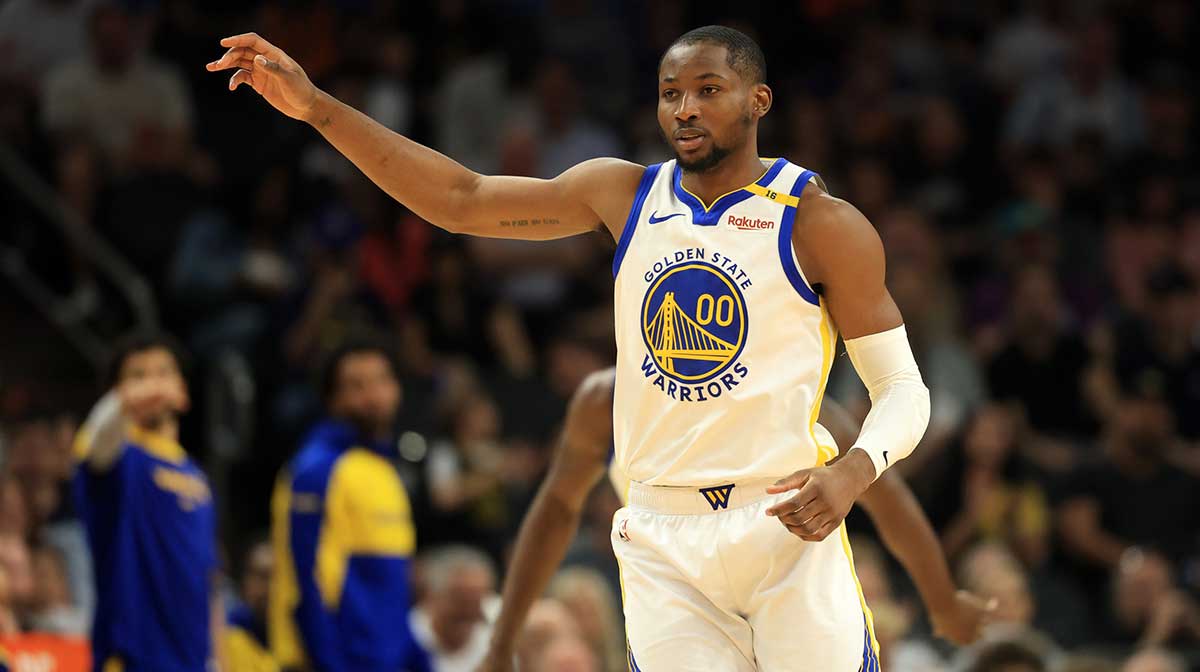
The Warriors were never close to giving up Kuminga in a sign-and-trade, sources said. While the organization flirted with the idea, holding discussions with multiple teams, the value Golden State would want never appeared this offseason.
There were two teams at the front of the line who discussed the idea of Kuminga becoming a key starter for them if the Warriors were to agree to a sign-and-trade this offseason. Those teams were the Sacramento Kings and Phoenix Suns.
Although the Suns did not have much to offer, their best package including Royce O'Neale and second-round assets, the Kings were aggressive in their pursuit of Kuminga.
Sacramento envisioned a long-term future for Kuminga, and the young forward was highly interested in what new general manager Scott Perry was selling him during the Kings' pitch early in free agency, sources said. The Kings felt strong about their position to land Kuminga, yet Golden State wasn't having it.
After an initial offer of Dario Saric, Devin Carter, and a heavily protected first-round pick, the Kings increased their offer to Malik Monk and a protected, future first-round pick.
While Monk has consistently been a strong sixth-man-like player in this league, the Dubs did not hold interest for a multitude of factors.
The Warriors knew they were bringing back Melton, and at the time of this offer, there was strong momentum leading to Payton returning as well. Along with these two players, Brandin Podziemski and Buddy Hield still held key roles on the roster.
Adding Monk would create an instant logjam of guards, and many within the organization questioned his fit as nothing more than a catch-and-shoot option, sources said. Not to mention, in order for a sign-and-trade of Kuminga for Monk to work, Golden State would've needed to part ways with either Hield or Moses Moody, something the organization held zero desire to do this summer.
The Kings had checked in with the Warriors multiple times, most recently a week before Kuminga and the Dubs agreed to their two-year contract. At no point were things trending in Sacramento's direction, and it became clear to Perry and his front office that they were not getting Kuminga this offseason.
In addition to Sacramento and Phoenix having interest in Kuminga, the Chicago Bulls were another team with initial interest in the athletic forward at the start of free agency, sources said. Kuminga was a player the Bulls have held interest in over the last year, as they proposed a deal to Golden State last offseason that would've sent him to Chicago and Alex Caruso to the Warriors.
These conversations with the Bulls at the start of this year's free agency never went anywhere, and thus, the Bulls never made a firm offer. Both the Miami Heat and New Orleans Pelicans also held conversations with the Warriors about Kuminga at the start of free agency, sources said.
Again, neither team gained any real traction on pursuing a sign-and-trade, but this preliminary interest in Kuminga has certainly set the stage for what is to come between now and the trade deadline in February.
The future of Jonathan Kuminga remains a mystery
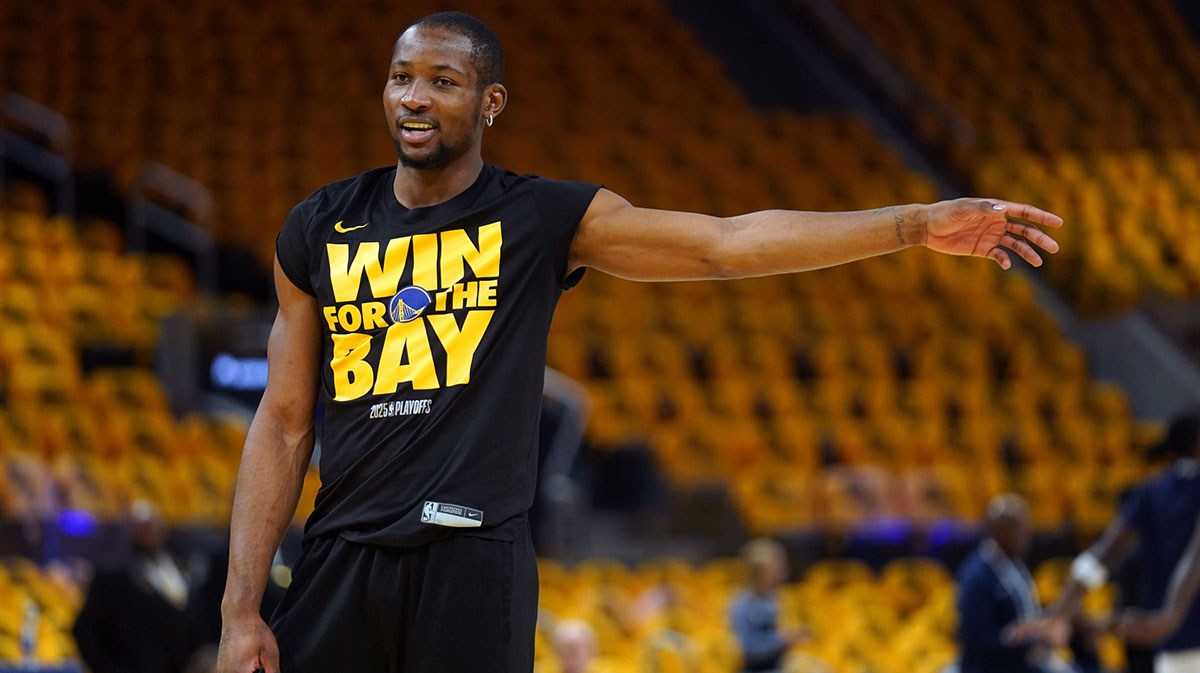
Jonathan Kuminga is happy to be with the Warriors. Or that's at least the message he has been sharing since signing his new two-year contract.
Money tends to solve a lot of issues between players and their respective organizations in this league, and maybe this is actually what Kuminga wanted all along from the Warriors. Now that he is back in the mix and expected to hold a key role in Kerr's rotations, maybe he will ultimately remain with Golden State long-term.
While many have discussed how Kuminga and Kerr have butted heads through the years when it comes to his role, the Warriors' head coach made it clear this week at training camp that their relationship is not strained whatsoever and that he doesn't expect Kuminga to be a distraction at all.
“I reached out to Jonathan quite a bit over the summer,” Kerr started saying during his press conference on Wednesday. “I always operate this way. I am constantly talking to our players and reaching out, offering help. We got a good team. We got powerful leadership in the locker room. I’ve known JK for four years now. He’s not that guy to come in and tear a team down.
“Jimmy is an alpha. Steph and Draymond are alphas. They run that locker room. I’m not worried about anything.”
All seems well for the Warriors.
Kerr and the team have welcomed Kuminga back with open arms, and the business side of basketball is now in the rearview mirror. Golden State is focused on the upcoming season, and Kuminga made it a point of emphasis to say multiple times on Thursday that his goal is to help the Warriors win a championship.
However, whether Kuminga will be around to help the Warriors get to the playoffs and push for a championship is a completely separate conversation.
The main reason why the Warriors did not want to see Kuminga accept his qualifying offer, besides the fact that they truly did want him back as an integral part of their roster, is that all of his trade value would dissipate. Dunleavy and Lacob needed Kuminga locked in on a contract in the $20-25 million range this season so they could explore trades with this cap hit.
Think of Kuminga's two-year contract sort of like an inflated trade exception in a way.
Whereas Golden State would need to follow the base-year compensation rules in sign-and-trades this offseason, meaning Kuminga's cap hit would only be 50 percent in outgoing salaries for matching purposes, those same rules don't directly apply during the 2025-26 regular season.
That means the Warriors can utilize his full $22.5 million salary and explore potential trade avenues involving Kuminga once he becomes trade-eligible on January 15.
No matter what happens on the court with Kuminga or in terms of his attitude, Golden State has basically extended its trade window for the young forward past this offseason.
Even if the Warriors don't trade Kuminga before the trade deadline and keep him through the end of the 2025-26 season, they could theoretically still pick up his option and use him as a trade asset again next summer. The bottom line is that this contract was essential to the Warriors' plans, and it allows them to maneuver the open market how they see fit.
There are multiple avenues for Dunleavy and the Warriors' front office to ponder over the next four months. Obviously, Lacob and this organization will always have their eyes set on the biggest of names who could potentially become available in trade talks.
We have all heard about Golden State's interest in Giannis Antetokounmpo dating back to before the 2020 pandemic, and that will be a situation the team monitors very closely in Milwaukee. Bam Adebayo is another All-Star in the East who would be at the top of the Warriors' list of potential trade targets if he were to ever request a trade from the Miami Heat, sources said.
In the West, the Kevin Durant ship has sailed with his trade and eventual extension with the Houston Rockets. While the Warriors wanted to make this possible at this year's trade deadline, Durant talked directly with Curry and made it clear he didn't feel like it was right for either party to reunite.
It is also hard to imagine that Lauri Markkanen would once again become a prime target for the Warriors on the trade market since his $46.4 million cap hit this season and $195 million contract would be nearly impossible to navigate.
Aside from the unknown of who could actually become available between now and the trade deadline in February, perhaps those who were interested in Kuminga will once again reignite their conversations with the Warriors, depending on where each team is at in the standings come January.
The Kings will likely maintain their interest in Kuminga, yet the Warriors still wouldn't have any motivation to strike a deal with Sacramento unless they were offered something irresistible. It is hard to envision a Monk-Kuminga swap being something Dunleavy and Lacob would have any interest in.
Then there are the Bulls and Pelicans, two other teams that previously held a level of interest in Kuminga. Would players like Coby White, Ayo Dosunmu, and Isaac Okoro be made available in a potential deal for Kuminga, and would the Warriors want any of these players long-term?
From the Pelicans' perspective, Herb Jones and Trey Murphy III are two players the Warriors have been linked to multiple times. If either player were to be available, which seems highly unlikely at this time, the Dubs would have interest. Throughout the offseason, New Orleans has made it clear Murphy is not available in trade talks whatsoever.
But all of these theoretical trade scenarios and potential options are nothing more than theory.
The reality is that Kuminga is back with the Warriors, and the organization envisions him being a key part of what they believe can be their fifth championship run since 2015.
“We feel like we have a player who can be really good,” Dunleavy said of Kuminga on Wednesday. “I don't feel like there's a need to make a move. Now, we will see how the season unfolds. Around this time last year, I would've said we need to get better. I don't feel that right now.
“I think we've done just enough to take us to another level. I'm really optimistic about this group.”
The dust has settled, and Kuminga is back to prove himself with the Warriors after the back-and-forth between his agent and the team. All of the dark clouds and potential drama that loomed large for this organization are gone, and Kuminga's focus is on one thing and one thing only: pursuing a championship with the team he chose to return to.


